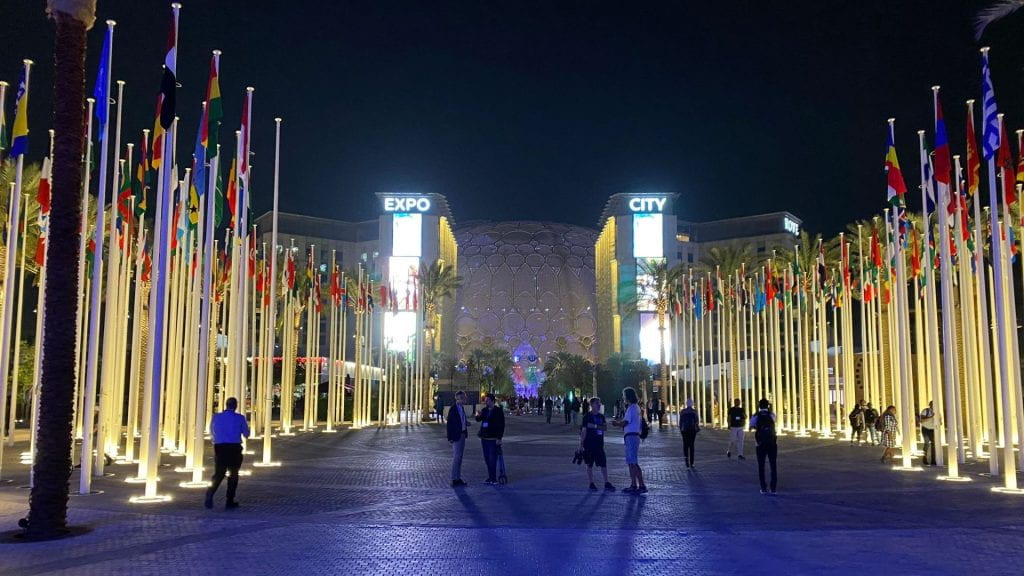
With carbon emission of around 25tCO2 per capita (global average around 4.5tCO2eq per capita) and energy demand of around 150MWh per capita (global average around 20MWh per capita), both among the 5 highest in the world, the UAE is on a per capita basis one of the largest contributor to climate change. And the host of COP28, the 28th Conference of the Parties, the main decision-making body of the UNFCCC. This makes uncomfortable reading, especially given the lack of progress in tackling human-made climate change. Then again, it probably does not matter where COPs are held as it is the agreements which countries commit to, and their success in fulfilling these commitments, which ultimately count. The number of fossil fuel business representatives makes equally uncomfortable reading. But maybe the number of fossil fuel lobbyists is a sign that they are taking COPs more seriously and rightly recognize strong action on climate change as a challenge to business as usual. Their desire to have their voices heard is testament to their recognition of the importance the UNFCCC’s process and progress on climate policy more generally.
The event itself, meanwhile, was discombobulating. Dubai’s geography of nowhere which robs you of any sense of scale and place is replicated in its Expo2020 site where COP was held. Huge distances between everything and the closed doors behind which languished side events and pavilions, mainly of countries but also of non-governmental organisations, multinational development banks, even universities, were the polar opposite of a bazaar where exchange was facilitated at previous COPs and in the space of 100 meters you might come across the International Labour Organisation, the World Bank, Egypt, Japan, Zambia, and Portugal. Thus, COP28 was sapped of interaction where browsing is enabled, chance facilitated, and happenstance happened. Instead, it felt strangely disjointed, more like an in-person zoom conference in the desert.
But the food was good, if expensive, the streets eerily safe and clean, the organization well executed, the venue shiny and spotless, public transport clean and efficient, water plentiful, and the sun reliable. It is hard to imagine impoverished countries not choosing a similar development trajectory if they were provided the opportunity. According to some calculations, African countries are sat on $10trn worth of hydrocarbons capable of pursuing such a development trajectory while pushing global warming to 6-7 degrees above pre-industrial levels. But which alternative development trajectory are we supporting which keeps these hydrocarbons in the ground while improving living standards and increasing opportunities? Access to climate finance is essential, while debt relief is the elephant in the room (I wonder how this analogy will read if we tacitly enable their extinction through poverty?). Calculations suggest that sentencing debt costs the 58 countries that make up the Vulnerable Twenty (V20) over £100bn/a. This sum would go a long way towards greening development and keeping hydrocarbons in the ground.
Instead, the Global Stocktake, the COP28 agreement, ‘calls on parties’ to ‘tripling renewable energy capacity globally and doubling the global average annual rate of energy efficiency improvements by 2030’. This is important as we need something to replace fossil fuels the Stocktake agrees to ‘transition away from’ and coal especially which it agrees to ‘phase-down’. While it will be virtually impossible to eliminate fossil fuels entirely from our economies, this language emphasizes the need to reduce their stranglehold on our energy systems. With emphasis placed on renewables and energy efficiency, this provides a plausible, just, and equitable transition pathway. While the statement that ‘abatement and removal technologies such as carbon capture and storage’ should be accelerated leaves a loophole for abated fossil fuel technologies, it emphasizes its use ‘in hard-to-abate’ sectors such as steel and cement. This loophole is to bring on board countries with very high fossil fuel dependence, not just for power generation but as the foundation of their entire economic prosperity.
Regarding transport, the document emphasizes the ‘reduction of emission from road transport on a range of pathways, including through development of infrastructure and rapid deployment of zero and low-emission vehicles’. This reference to infrastructure is highly relevant as it refers to mass transit systems which, according to the Intergovernmental Panel on Climate Change, are far more efficient than electric vehicles for example. Finally, ‘phasing out inefficient fossil fuel subsidies that do not address energy poverty or just transitions, as soon as possible’ should act as a financial driver of this transition. According to the International Monetary Fund, such subsidies amount to $7tn per year, or 7.1% of GDP. This implies that governments around the world effectively subsidise every tonne of CO2 emitted to the amount of $125. If we used this money to subsidise renewable energy and energy efficiency, as well as abatement in hard-to-treat sectors and eventually removals to account for historical emissions, 1.5 degrees is still alive, and African countries for example could be placed on a clean development trajectory towards prosperity and opportunity.
Despite tentative progress, however, parties failed to agree on the modalities of Article 6. Article 6 is the last building block of the Paris Agreement which has yet to be agreed on, with a rulebook in place that all parties agree on. Apparently, a bloc led by the US favours a light-touch approach akin to voluntary carbon markets. Unsurprisingly given their discreditation in recent months, a bloc involving the EU an African and Latin American states favours stronger checks and balances to avoid the creation of junk credits and discreditation of all market mechanism. A lot is at stake. Under the Clean Development Mechanism (CDM), the predecessor of Article 6, over £200bn was channelled into Chinese wind energy. For all its flaws, the CDM in this particular case supported the development of a renewable energy industry in a country which barely had a wind turbine installed when it came into force. Market mechanisms are powerful instruments which are difficult to guide but their potential to incentivize climate finance is evident.
To deliver the objectives of the Global Stocktake and the Paris Agreement, we need mechanisms to avoid free-riding which occurs when countries benefit from ambitious net zero emission mitigation activities in other countries without contributing to the cost. If market mechanisms are operationalised through climate clubs, this issue of free-riding can be overcome. This enables ambition to be raised and collective action to be supported. Yet significant efforts are required to ensure that poor countries can benefit while excludable benefits are sufficient to ensure integrity and support higher ambition in climate change mitigation. The stakes are high and the Global Stocktake is a small but significant step in this direction. But a lot more climate diplomacy is necessary, alongside a collaborative spirit, to ensure that the transition away from fossil fuel is actions and that this transition is just.
————————
This blog is written by Cabot Institute for the Environment member, Dr Colin Nolden, University of Bristol Law School.


























